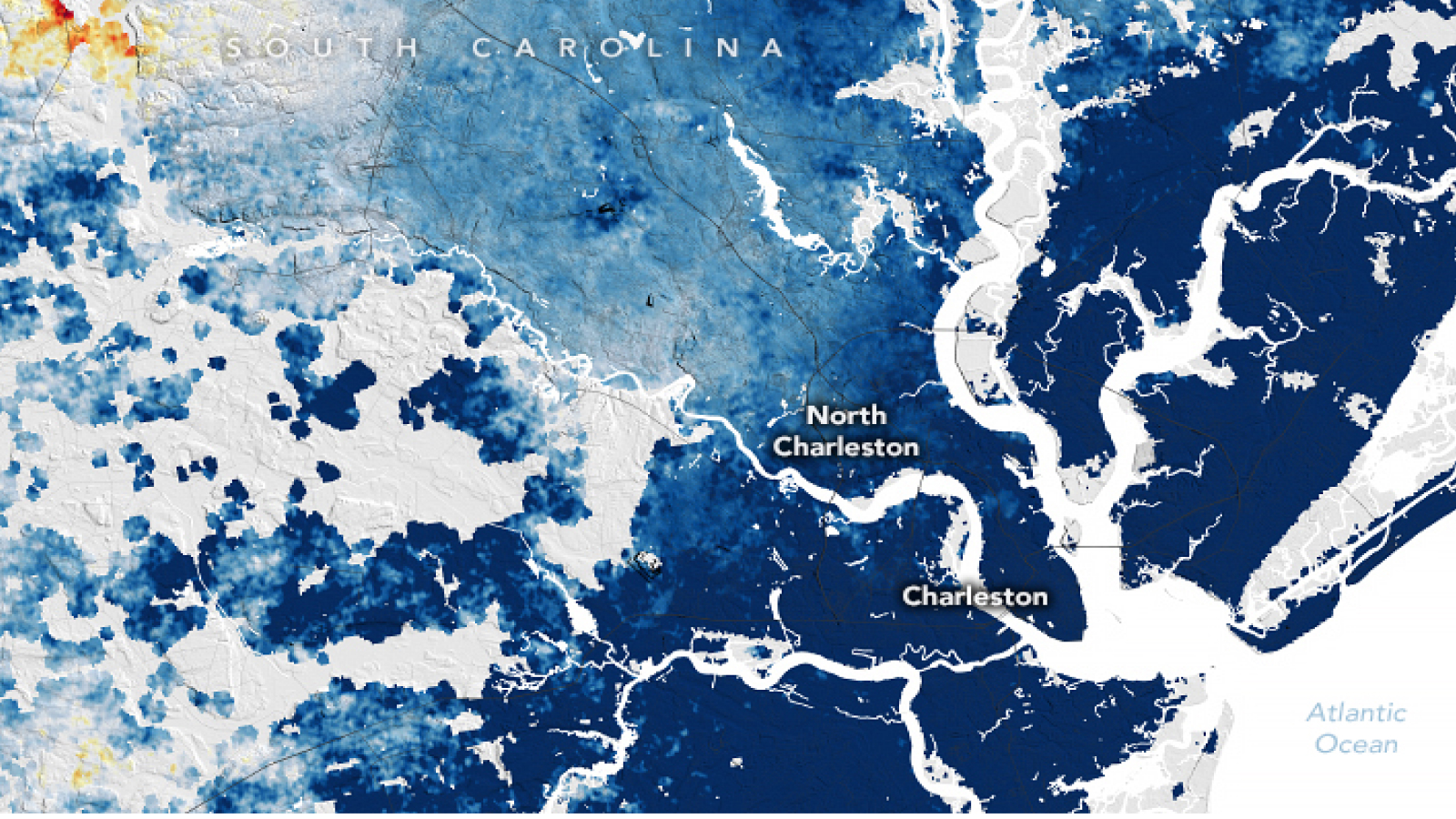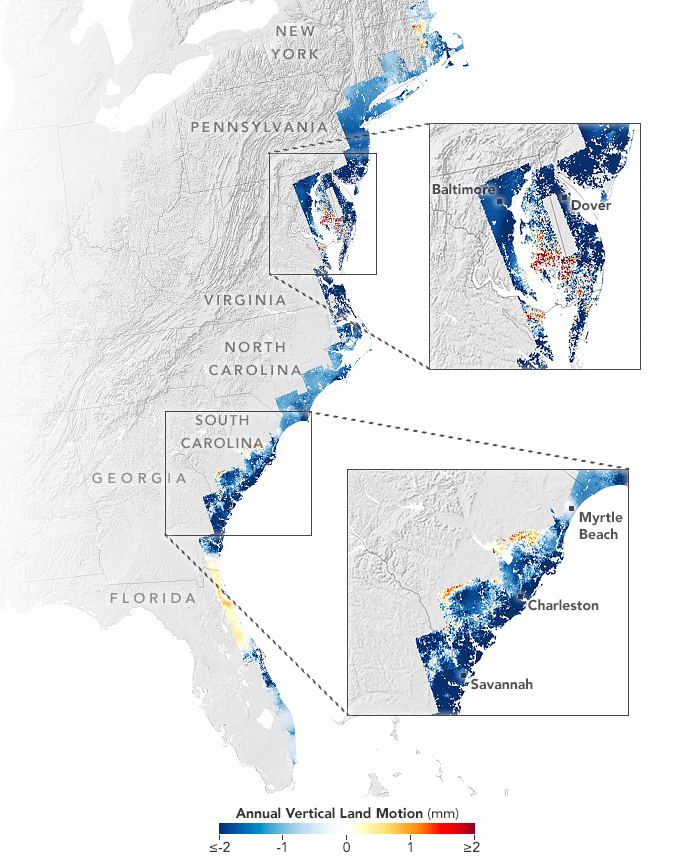East Coast cities are sinking at a shocking rate, NASA images show
Satellite images reveal the rate that cities along the U.S. East Coast, including New York, Baltimore and Charleston, are sinking into the ground.

NASA satellite images show the shocking speed at which the land is sinking beneath major U.S. cities, including Baltimore, New York and Charleston.
The images, revealed by NASA Earth Observatory on Feb. 20, show land movement across the East Coast, with areas in dark blue sinking at the fastest rate. The subsidence threatens infrastructure, farmland and wetlands — especially as sea levels rise.
Between 2007 and 2020, the ground underneath New York, Baltimore and Norfolk, Virginia, sank by an average of 0.04 and 0.08 inch (1 to 2 millimeters) a year, the satellite data showed. In several counties in Delaware, Maryland, South Carolina and Georgia sank at double or triple that rate, according to a study published Jan. 2 in the journal PNAS Nexus.
"Subsidence is a pernicious, highly localized, and often overlooked problem in comparison to global sea level rise, but it's a major factor that explains why water levels are rising in many parts of the eastern U.S.," Leonard Ohenhen, a geophysicist at Virginia Tech and one of the authors of the study, told NASA Earth Observatory.
Subsidence has many consequences for people living along the coast, including a greater risk of flooding and damage to homes and infrastructure caused by unstable ground. At least 867,000 properties and critical infrastructure — including highways, railways, airports, dams and levees — were all subsiding, according to the study.
Sinking land can also lead to salt water intruding into farmland, crops and fresh water supplies, as well as impacting wildlife habitats like marshlands, according to NASA Earth Observatory.
Sign up for the Live Science daily newsletter now
Get the world’s most fascinating discoveries delivered straight to your inbox.
One of the fastest-sinking cities is Charleston, South Carolina, where the downtown area is just 10 feet (3 meters) above sea level. The city is sinking by around 0.16 inch (4 mm) per year.

According to NASA Earth Observatory, the subsidence under Charleston is largely caused by human activity such as groundwater pumping. When humans drain underground aquifers or extract natural gas from the ground, the empty spaces left behind can collapse, causing the land above to sink. However, in places like New York, a combination of factors are contributing to subsidence, including the soft land it is built on and the weight of the buildings.
The researchers used satellite images and ground-based GPS sensors to study the coast from New England to Florida. They then created a map that revealed the variability in the rising and falling of various areas along the coast. That data was measured against data collected by the ground-based Global Navigation Satellite System to detect the rate of sinking.
According to the maps, the mid-Atlantic region is sinking more than the northeastern U.S. This is largely down to a geological process called glacial isostatic adjustment, which is the ongoing movement of land once burdened by heavy ice sheets during the last ice age, which lasted from around 126,000 to 11,700 years ago.
The edge of the huge Laurentide ice sheet ran through what are now Pennsylvania and New Jersey, pushing the land down with the weight of the ice. Meanwhile, the land beyond the ice's perimeter was forced upwards. When the ice began to melt around 12,000 years ago, the land that once bulged along the coast began to sink and is continuing to do so.
Study co-author Manoochehr Shirzaei, director of the Virginia Tech lab, said the researchers hope to map the Gulf Coast next. "Our long-range goal is to map all of the world's coastlines using this technique," he said in the press release. "We know that planners in several U.S. cities are already using our data to make our coastlines more resilient, and we want cities all over the world to be able to do the same."

Lydia Smith is a health and science journalist who works for U.K. and U.S. publications. She is studying for an MSc in psychology at the University of Glasgow and has an MA in English literature from King's College London.










